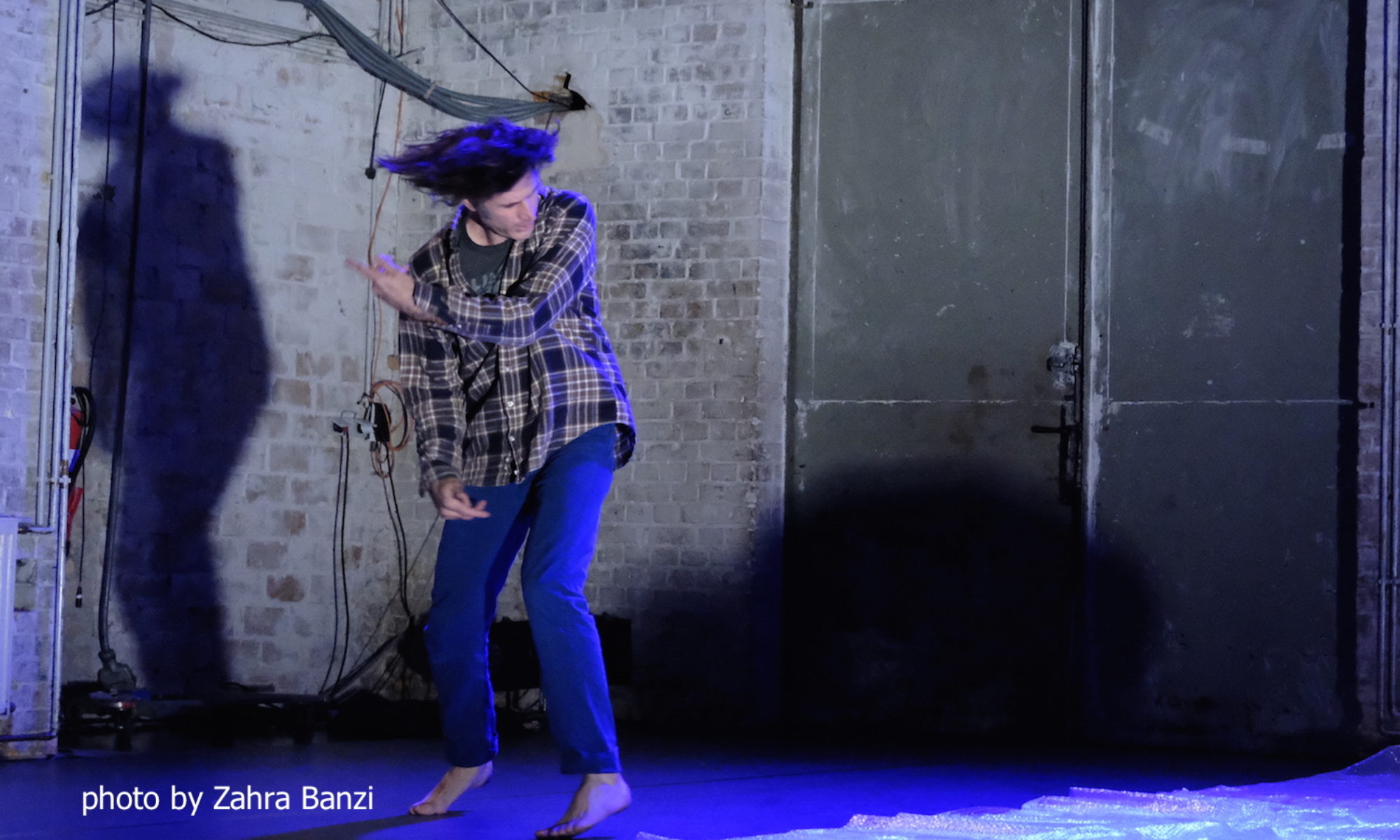Seven Thirty In Tights
April 28th 2013 at Sophiensaele
“Picture the ballroom dance of the future. Imagine this dance and its consequences are the result of an intense physical dialogue between dancers – an interaction of distinct group decisions in which all react to the impulses of the others and have to find answers in a split second. Now imagine this dance was a political practice.” – from the program
I saw another piece by Frédéric Gies several years ago and I had the same problem with this one as I did that one. He adds too many other elements to the stage space that the physical actions lose value or I can’t tell what he values about them. The last performance had explicitly stated BMC exercises paired with music by Madonna and a large rug like object hanging from the ceiling upstage. I don’t have or remember the program notes from that piece, so I can’t say what Gies’ goal was in juxtaposing those elements together.
With this piece, he wants us to picture the ballroom dance of the future. The dance we see is a group tuning score about decision making and reacting to others, i.e. improvising. By asking us to view a type of event that is very much of the present (group improvisation) as the ballroom dance of the future, is he saying that in the future scored group improvisation will be a rigid codified form of dance. Looking at another form of group decision making and reacting, the contact improvisation jam, we are well on our way. Contact Improvisation is all but a codified social dance with defined movements and roles. But Gies and company were not engaging in contact improvisation, at least not in the normative sense of contact improvisation. But as they were improvising and coming in and out of contact, the performers in Seven Thirty In Tights could be viewed as engaging in contact improvisation. After all who determines the tools used in a performance – the doers or the viewers?!!?
For me this piece suffered from a flat ontology. All elements had equal value. The physicality didn’t change that much through out the 60 minute plus. The dancers came in and out of manual contact, dancing alone or facing each other. There was some change in tempo, initiated mostly by the female all dressed in red. Well, maybe the elements didn’t have equal value, but I felt that there was so much sensorial noise generated by all the non-dance considerations of the piece, that I couldn’t help but be preoccupied by wondering about the reasons for those elements, thus lowering for the valorization of the corporeal elements. I tried to enjoy the physical actions of the performers (and there were some well trained people performing whom I have enjoyed watching in other performances) but I couldn’t get past the neon lights, the costumes, the tape on the floor, and the program notes.
The physical practice in the piece was not of the future, so maybe the tights, the lights and the tape indicating the 4th wall are elements from the future. But colored fluorescent tubes (a possible Flavin reference?), non-proscenium stage spaces and tights are also not of the future. So is it then the combination of group real time spontaneous composition with the, lighting, costuming, and staging that create the ballroom dance of the future? Or is it up to us, the viewers who have read the program to picture the dance of the future, inspired by the elements presented? (Representation, once again rears its ugly head!)
Another element of the program statement that lowered the valorization of the corporeal elements of the performance was the directive to imagine the dance as a political practice. I felt that in order to do that more fully and in the direction that the choreographer intended I should have attended the lecture by Sylvie Tissot that took the day before I attended the performance. Was this piece a political practice because it was more improvised than choreographed? Was this piece a political practice because the individuals were able to make their own decisions within a larger set of considerations? Political because tax dollars are supporting the work? Who determines the politics – the doers or the viewers?
In summation – I did see some dancing I enjoyed
, solo body and group, but the staging and sartorial choices were too aesthetically noisy overwhelming the dancing itself. The program notes were too generic and could be applied to any dance, performance, or sporting event for than matter. Maybe instead of generic, I should say open. But for me the program notes/framing/contextualization were way too open. Isn’t part of the artist’s job to focus our attention?
